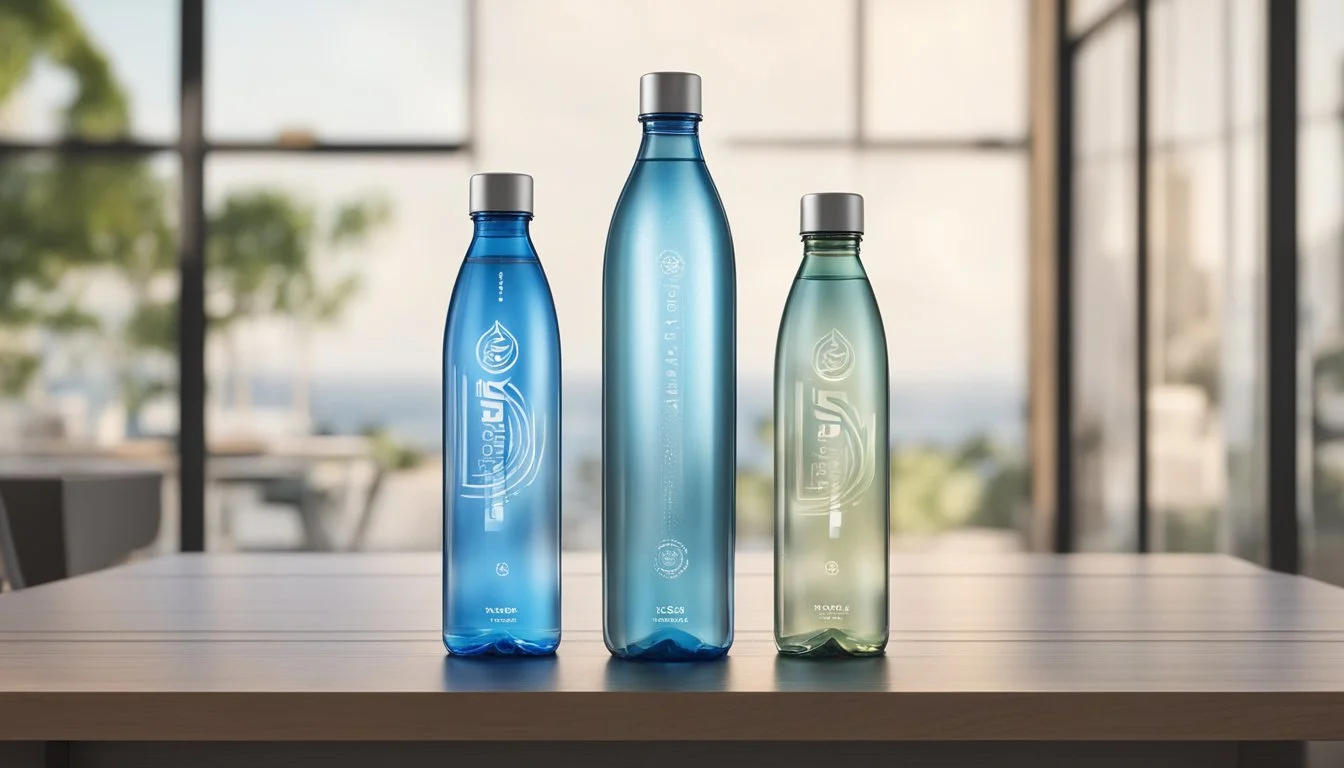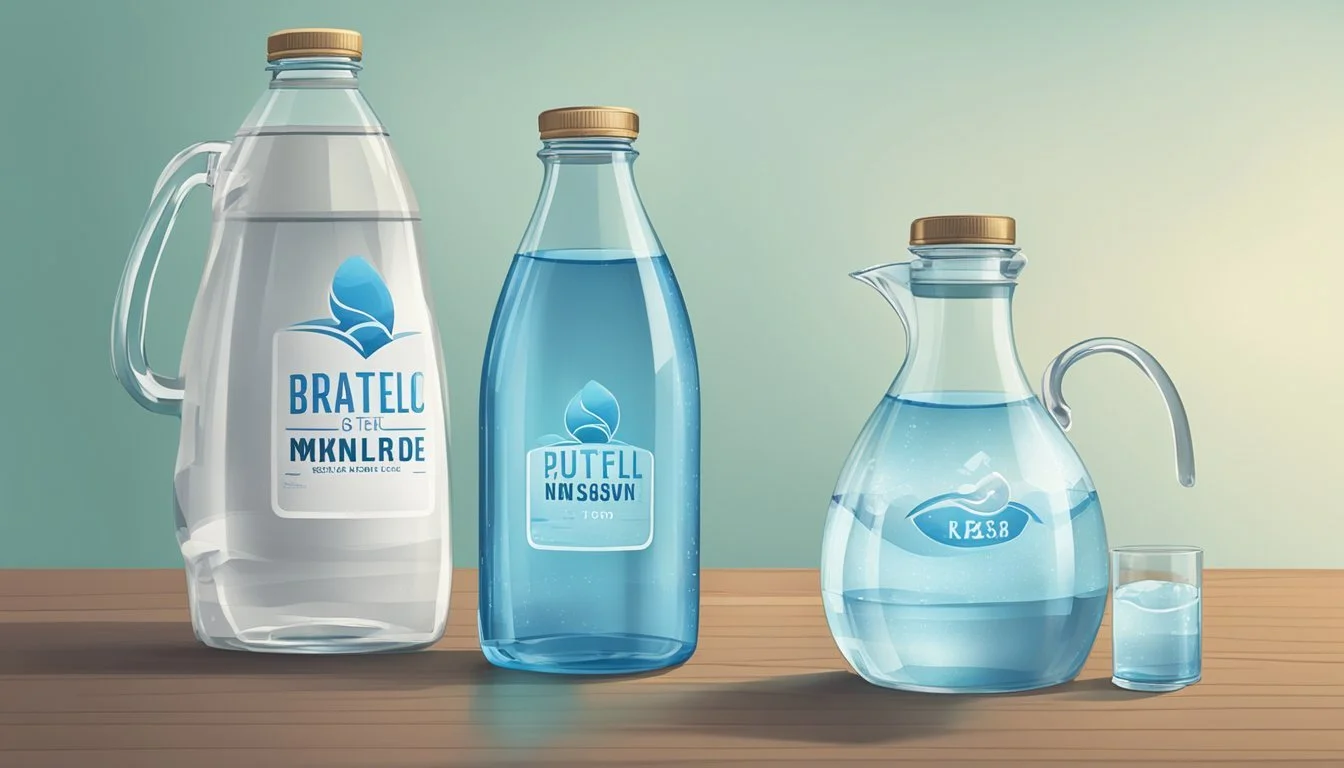Essentia vs. Flow
Which Bottled Water is Better for You?
When it comes to hydration, the choice between Essentia and Flow bottled water can make a significant difference. Essentia stands out with its advanced ionization process, ensuring a higher pH level of 9.5, which results in water that is exceptionally pure and potentially more hydrating. Flow, on the other hand, prides itself on sustainability, offering naturally alkaline spring water with eco-friendly packaging, appealing to environmentally conscious consumers.
Both brands are committed to purity and quality. Essentia undergoes rigorous filtering processes, including reverse osmosis and ultraviolet exposure, to remove impurities and enhance the water with electrolytes. Flow’s natural spring water maintains its alkalinity without added chemicals, offering a clean and refreshing taste.
Choosing between Essentia and Flow ultimately depends on what you value more in your bottled water: the higher alkalinity and purification process of Essentia, or the natural, eco-friendly approach of Flow. Each offers distinct benefits, catering to different preferences and priorities in the pursuit of optimal hydration.
Understanding Bottled Water
Bottled water comes in various types, each offering different properties and benefits. Safety and quality are maintained through strict regulatory standards governing purification processes and mineral content.
Types of Bottled Water
Spring Water is drawn from underground sources and flows naturally to the earth's surface. It retains its natural minerals, offering a distinct taste and health benefits.
Purified Water undergoes extensive filtration processes such as reverse osmosis and distillation. These methods remove impurities, making it one of the cleanest water types available.
Alkaline Water has a higher pH level, typically over 7. It is often enriched with minerals like calcium and magnesium, which can enhance hydration and neutralize acidity in the body.
Mineral Water contains naturally occurring minerals. These waters are sourced from mineral springs, providing health benefits attributed to their mineral content, including improved bone and digestive health.
Sparkling Water is carbonated water containing dissolved carbon dioxide gas. It comes in both natural and artificially infused options, adding a refreshing fizz without the calories of sugary sodas.
Regulatory Standards
The Environmental Protection Agency (EPA) sets guidelines for tap water, while the Food and Drug Administration (FDA) regulates bottled water. Both agencies ensure that water meets specific safety and quality standards.
Purification Methods such as micro-filtration and ultraviolet exposure are commonly employed to meet these regulations. These processes remove contaminants, ensuring bottled water is safe to consume.
Mineral Content Limits are also defined. For instance, mineral and spring waters must retain required levels of naturally occurring minerals to be labeled as such, ensuring transparency and consistency for consumers.
Overall, regulatory standards aim to guarantee that every bottle of water is safe, clean, and accurately labeled, providing consumers with confidence in their drinking choices.
Components of Water Quality
Water quality can be evaluated based on several factors, with pH and mineral content being among the most critical. Both have significant implications for hydration and health.
pH and Alkalinity
The pH level of water measures its acidity or alkalinity. Essentia water is known for its high pH, typically exceeding 9.5. This makes it one of the more alkaline options available. Alkaline water enthusiasts argue that higher pH levels may aid in neutralizing acid in the bloodstream and improving overall hydration.
Flow, on the other hand, offers a naturally alkaline pH level of around 8 due to its source and mineral content. While slightly lower than Essentia, it still provides benefits such as better taste and electrolyte balance.
Essentia Water:
pH: Over 9.5
Alkaline due to ionization and added electrolytes
Flow:
pH: Around 8
Naturally alkaline from the source
Mineral Content and Health Impact
Minerals like calcium, magnesium, and sodium are naturally present in many bottled waters and are essential for health. These minerals can affect both the taste and the health benefits of the water.
Essentia water undergoes a process of reverse osmosis and micro-filtration, which removes impurities but also allows for the addition of beneficial electrolytes. It contains a balanced mix of calcium, magnesium, and sodium, contributing to better hydration.
Flow water draws its mineral content naturally from its spring source. It boasts beneficial levels of calcium and magnesium, essential for bone health and muscle function. Sodium levels are also balanced to help with electrolyte replenishment.
Essentia Water:
Contains added minerals: calcium, magnesium, sodium
Processed through reverse osmosis and micro-filtration
Flow:
Naturally occurring minerals: calcium, magnesium
Sourced from natural springs
Both Essentia and Flow provide high-quality hydration, but their approaches to mineral content and pH levels differ significantly.
Brand Analysis: Essentia
Essentia water stands out due to its rigorous purification process, health benefits, and commitment to environmental sustainability. This section breaks down how Essentia purifies and enhances its water, the health benefits it offers, and its reputation and efforts in environmental sustainability.
Production and Purification
Essentia water undergoes a multi-step purification process, including micro-filtration, reverse osmosis, and ultraviolet exposure, ensuring 99.9% purity. This leaves almost no total dissolved solids (TDS). The water is then ionized and infused with electrolytes, resulting in an alkaline pH level of 9.5 or higher.
The ionization process starts with municipal water, which is stripped of contaminants, and then electrolytes are added. The alkalinity and electrolytes are designed to support better hydration and overall health. Quality control is stringent, consistently delivering pure and ionized alkaline water to consumers.
Health and Wellness Contributions
Essentia’s high pH level and added electrolytes contribute to several health benefits. Alkaline water, with its higher pH, helps in neutralizing acid in the body, which could aid in reducing acid reflux. The inclusion of electrolytes like potassium, sodium, and magnesium enhances hydration efficiency, especially beneficial for athletes or those leading an active lifestyle.
Regular consumption of Essentia may support better hydration compared to regular bottled water, as the electrolytes facilitate faster and more efficient absorption. The consistent purity of Essentia water ensures that consumers are not ingesting harmful contaminants, aligning with a health-focused lifestyle.
Brand Reputation and Environmental Efforts
Essentia is recognized not just for its high-quality water but also for its commitment to environmental sustainability. The brand uses BPA-free, recyclable plastic for its bottles, minimizing the environmental impact. They have initiatives aimed at reducing their carbon footprint and are involved in various sustainability projects.
Consumer perception of Essentia is generally positive, with the brand widely acknowledged for its product quality and environmental consciousness. They focus on transparency in their production process and actively engage in environmental conservation, enhancing their reputation as a responsible and trustworthy brand.
Brand Analysis: Flow
Flow spring water is recognized for its commitment to sustainability and premium quality. Key aspects include the natural benefits of its Canadian spring water source, eco-friendly packaging solutions, and the company's values focused on reducing carbon footprint.
Water Source and Natural Benefits
Flow sources its water from a natural spring in Canada. This spring water is praised for its high mineral content and alkaline pH of around 8.1, providing a smooth, clean taste.
Natural mineral content and alkalinity are often highlighted as beneficial for hydration and overall well-being. Unlike some brands, Flow maintains the water's natural properties without additional treatment.
Packaging and Consumer Impact
Flow stands out with its innovative packaging. Instead of traditional plastic, Flow uses 68% renewable materials in its boxed water, which includes paperboard and a plant-based cap. This packaging design significantly reduces plastic waste and appeals to environmentally conscious consumers.
For those seeking alternatives to plastic, Flow also offers water in glass bottles. The packaging choices align with a growing consumer shift towards sustainability.
Company Values and Sustainability
Flow places a strong emphasis on environmental sustainability. The company aims to achieve a carbon-neutral footprint by continually optimizing its logistics and materials. Their commitment extends beyond packaging, as they support various environmental projects and initiatives aimed at protecting water resources and promoting sustainability.
Flow’s efforts in sustainability reflect their values and attract environmentally-minded consumers.
Comparative Taste Profiles
When examining the taste profiles of Essentia and Flow, clear differences emerge.
Essentia is known for its high pH level, which often exceeds 9.5. This gives it a crisp, clean taste that some describe as refreshing and smoother than regular bottled water. The ionization process also adds a distinct character, setting it apart in taste tests.
Flow, on the other hand, prides itself on its natural spring water origin with a pH between 8.1 and 8.5. Flow's taste is often described as light and clean, with a minerally quality due to its natural mineral content, which includes magnesium, calcium, and potassium.
Taste Preferences
Essentia: Preferred by those who favor a more pronounced, alkaline taste with a distinctly purified feeling.
Flow: Appeals to individuals who enjoy a subtler flavor profile with the natural essence that spring water provides.
Taste Test Insights
In blind taste tests, Essentia often ranks higher for those who prefer a crisp and clean profile. Flow, meanwhile, is favored by those who appreciate a more natural and mineral-rich flavor.
Factors such as hydration characteristics and the perceived purity of each brand also influence subjective taste preferences.
Both brands cater to different audiences, making taste an important factor to consider based on personal palate preferences and hydration needs.
Hydration and Physical Performance
Hydration is crucial for sustaining physical activity and optimizing health. Essentia and Flow offer distinct advantages in aiding this process through their unique compositions and hydration technologies.
Hydration Efficiency
Essentia Water boasts a high pH level of 9.5, which is attributed to its ionization process, aimed at improving hydration. This high-alkaline water claims to neutralize acid in the bloodstream, potentially enhancing the body's hydration efficiency. Additionally, a clinical study indicated that Essentia's supercharged ionized alkaline water could be more effective in rehydrating than other leading bottled waters.
Flow, on the other hand, offers naturally alkaline water with a pH level around 8.1. Sourced from artesian springs, Flow’s water is rich in essential minerals and electrolytes. These elements play a vital role in maintaining the body's fluid balance, particularly during physical activity. The natural mineral content in Flow can assist in replenishing lost electrolytes, thus supporting better hydration.
Water Consumption for Athletes
Athletes have unique hydration needs, often requiring more than just plain water to stay adequately hydrated. Essentia's ionized alkaline water is marketed as beneficial for athletes due to its higher pH and added electrolytes, which can aid in prolonged physical performance and quicker recovery.
Flow provides a different approach by delivering water enriched with natural electrolytes. This is essential for athletes, as electrolytes help regulate muscle function and maintain proper hydration levels. Flow's commitment to providing mineral-rich water ensures that athletes get the necessary nutrients to support their physical endeavors.
Both Essentia and Flow cater to the hydration needs of athletes, each with its unique blend of pH balance and mineral content. Whether through ionization or natural sourcing, these brands aim to enhance physical performance and health through superior hydration solutions.
Environmental and Health Concerns
Water consumption has essential implications for both personal health and the environment. Each drinking choice, be it bottled or alternative sources, impacts both these factors.
Bottled Water vs. Tap Water
Bottled water, including brands like Essentia and Flow, raises several environmental and health questions. Tap water is typically subject to stringent regulations and frequent testing. It often boasts superior safety compared to bottled options.
Contaminants in tap water, such as lead, can pose health risks, but these are actively monitored and treated. Bottled water, although marketed as purer, can contain impurities and microplastics. Both options offer safe drinking water but choosing tap water often supports better sustainability.
Plastics and Recycling
The environmental impact of bottled water is significant due to the reliance on plastic bottles. Polyethylene terephthalate (PET), commonly used for these bottles, contributes to pollution and environmental degradation. Recycling PET bottles reduces waste, but the process is not flawless.
Microplastics stemming from plastic waste can infiltrate water sources, leading to potential health risks. Limiting bottled water consumption can alleviate some environmental concerns, promoting a more sustainable approach to hydration.
Alternative Water Sources
Exploring alternatives to traditional bottled water can offer both health and environmental benefits. Filtration systems integrated into tap water lines ensure the removal of contaminants and impurities, offering a viable substitute with minimal ecological impact.
Other sustainable alternatives like reusable water bottles and water stations reduce the dependency on single-use plastics. These choices not only curb plastic pollution but also align with environmental sustainability goals, providing safe access to drinking water without the detrimental effects of plastic waste.
More About Essentia
Essentia vs Cascade Mountain: Which Bottled Water is Better?
Essentia vs Hawaiian Springs: Which Bottled Water is Better?
Essentia vs Icelandic Glacial: Which Bottled Water is Better?
Essentia vs Kirkland Signature: Which Bottled Water is Better?
Essentia vs Mountain Valley Spring Water: Which Bottled Water is Better?
Essentia vs Nestle Pure Life: Which Bottled Water is Better?
Essentia vs Richard's Rainwater: Which Bottled Water is Better?
Essentia vs Talking Rain AQA: Which Bottled Water is Better?
Essentia vs Whole Foods Italian Still Mineral water: Which Bottled Water is Better?








